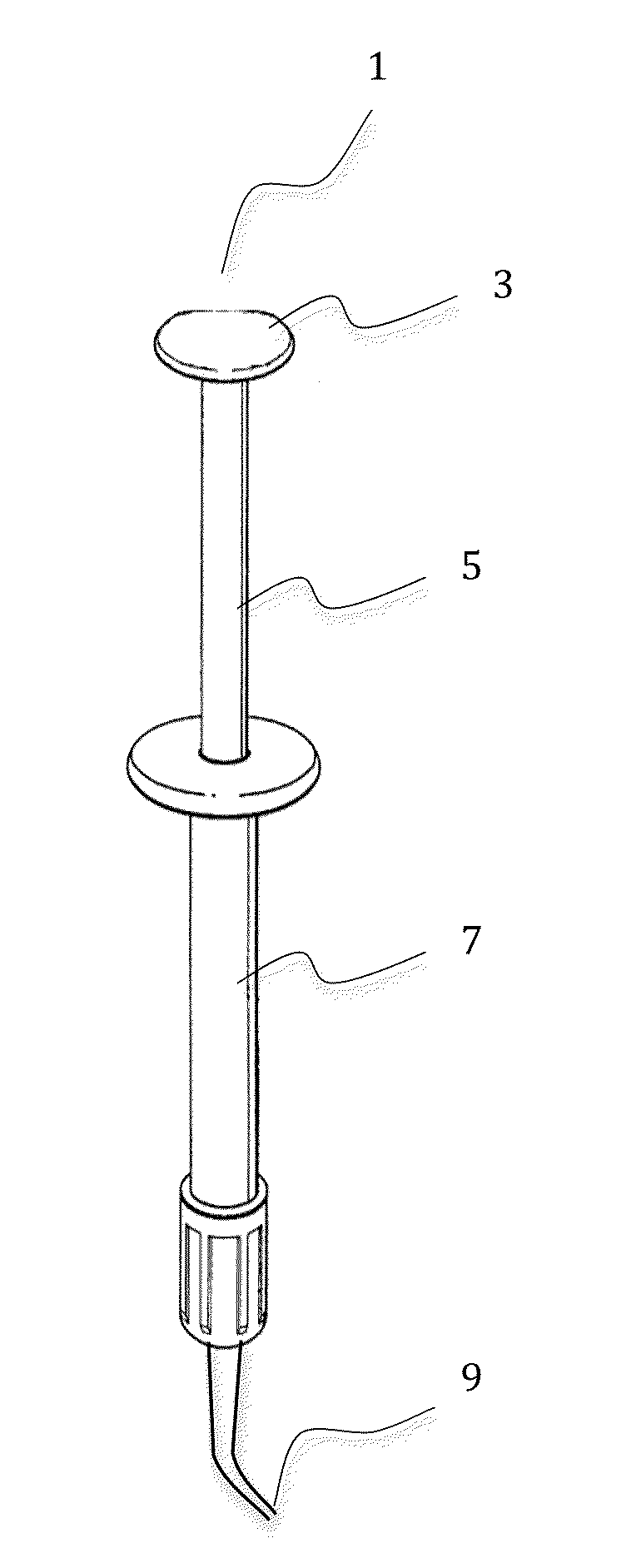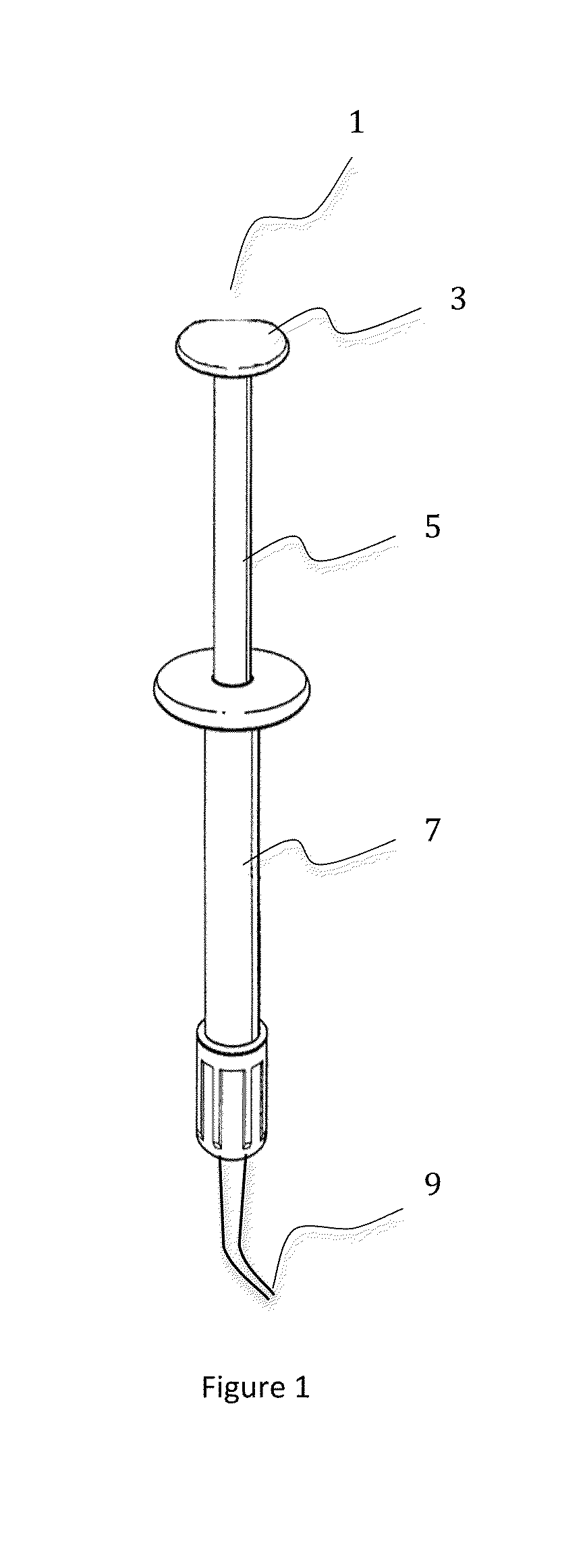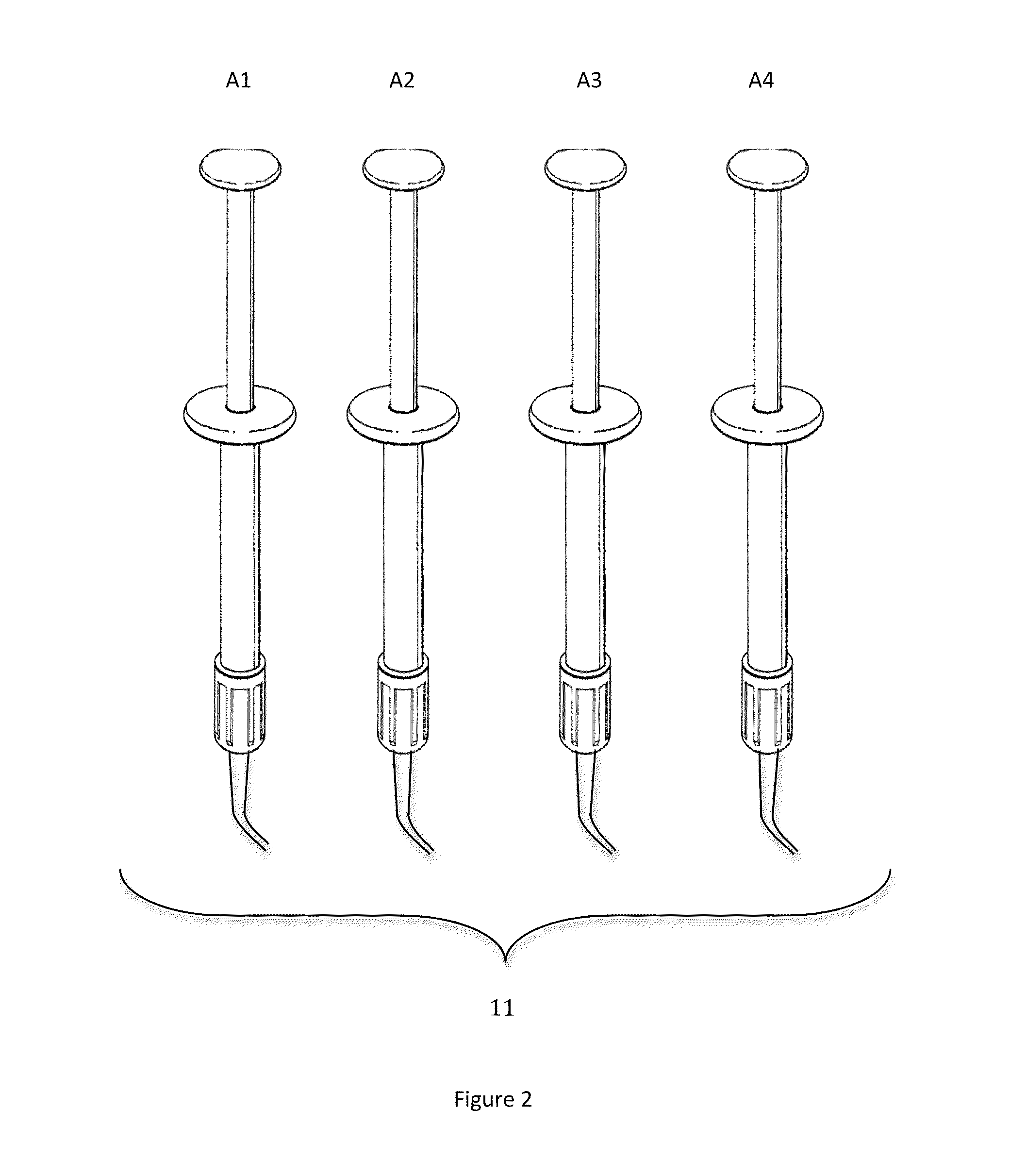Delivery syringe for flowable dental compound
a flowable, dental compound technology, applied in the field of flowable flowable dental compound delivery, can solve the problems of air entrapment voids that are undesirable, further tooth decay, and fracture of filling materials during chewing, and achieve the effects of strong composite materials, desirable flow characteristics, and high filler load
- Summary
- Abstract
- Description
- Claims
- Application Information
AI Technical Summary
Benefits of technology
Problems solved by technology
Method used
Image
Examples
Embodiment Construction
[0019]The inventive flowable dental composite delivery syringe 13 is shown in FIG. 3 having a plunger 15, which extends into a composite filled barrel 17 and a delivery tip 19. The vibration generator 21, battery source 23, and on / off actuator 25 are located on the proximal end of the syringe plunger 17. When finger pressure is exerted on the on / off actuator 25, the vibration generator 21 is activated and the plunger 15 extrudes flowable composite material from the syringe barrel 17 out the syringe tip 19. Vibrations are transferred from the vibration generator 21 through the plunger 15 and barrel 17 to the syringe tip 19.
[0020]FIG. 4 illustrates an alternative embodiment of the current invention showing the vibration apparatus 27, consisting of a vibration generator 21, battery source 23, and an on / off actuator 25. The self-contained vibration apparatus 27 is attachable and detachable from the delivery syringe (←→) plunger handle 3. The vibration apparatus 27 has a metallic surface...
PUM
 Login to View More
Login to View More Abstract
Description
Claims
Application Information
 Login to View More
Login to View More - R&D
- Intellectual Property
- Life Sciences
- Materials
- Tech Scout
- Unparalleled Data Quality
- Higher Quality Content
- 60% Fewer Hallucinations
Browse by: Latest US Patents, China's latest patents, Technical Efficacy Thesaurus, Application Domain, Technology Topic, Popular Technical Reports.
© 2025 PatSnap. All rights reserved.Legal|Privacy policy|Modern Slavery Act Transparency Statement|Sitemap|About US| Contact US: help@patsnap.com



